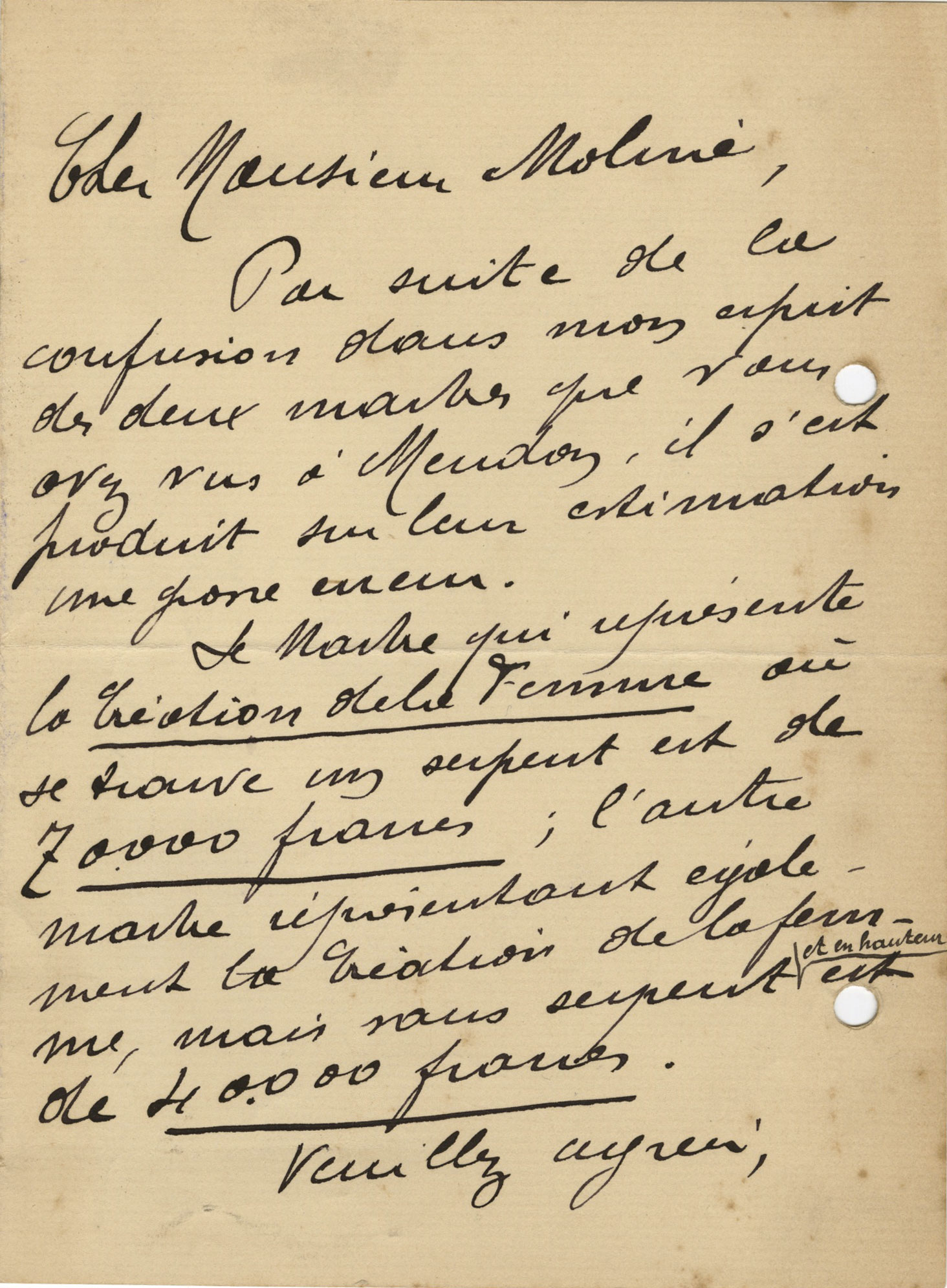Auguste Rodin Writes His Agent, Setting the Prices of His Great Marble Sculptures of the “Creation”


A rare letter referencing two of his iconic sculptures.
- Currency:
- USD
- GBP
- JPY
- EUR
- CNY
Auguste Rodin is in many ways the father of modern sculpture and one of the most well known and recognized artists worldwide, with great museums to his legacy not only in his hometown of Meudon, France but in Philadelphia and elsewhere. His bronze and marble statues are instantly recognizable. Among his most...
Auguste Rodin is in many ways the father of modern sculpture and one of the most well known and recognized artists worldwide, with great museums to his legacy not only in his hometown of Meudon, France but in Philadelphia and elsewhere. His bronze and marble statues are instantly recognizable. Among his most well known works are representations of men and women in their unadorned forms, a symbol of how they were created and their capacities.
In 1894, Rodin produced two marble, Biblically themed sculptures showing the Creation of Woman by the hand of God. One contained a serpent, a symbol of evil, and the devil in the Garden of Eden. The other was taller and was without the serpent.
Lucien Moline was a well known French art dealer and agent who helped Rodin sell his works, as he did with several other French artists.
Letter signed, April 24, 1912, to Moline. “As a result of my own personal confusion of the two marbles that you saw at Meudon, there has been a major error in the prices given. The marble that represents the Creation of Woman and which contains the serpent is 70,000 frances; the other marble also representing the Creation of Woman but without the serpent and taller is 40,000 francs.”
The latter remained in the artist’s private collection until it was donated to his country, France, in 1916. It now resides in the Rodin Museum in Meudon.

Frame, Display, Preserve
Each frame is custom constructed, using only proper museum archival materials. This includes:The finest frames, tailored to match the document you have chosen. These can period style, antiqued, gilded, wood, etc. Fabric mats, including silk and satin, as well as museum mat board with hand painted bevels. Attachment of the document to the matting to ensure its protection. This "hinging" is done according to archival standards. Protective "glass," or Tru Vue Optium Acrylic glazing, which is shatter resistant, 99% UV protective, and anti-reflective. You benefit from our decades of experience in designing and creating beautiful, compelling, and protective framed historical documents.
Learn more about our Framing Services








































































































